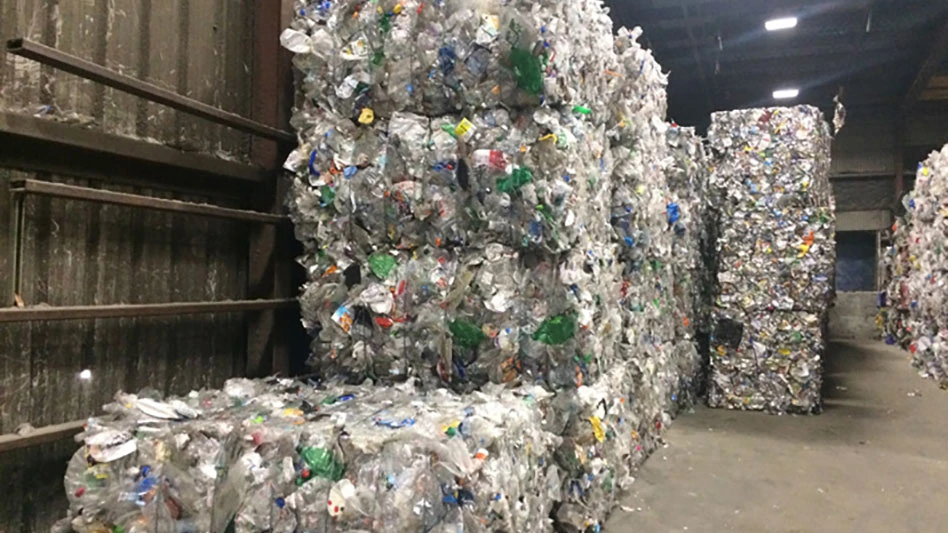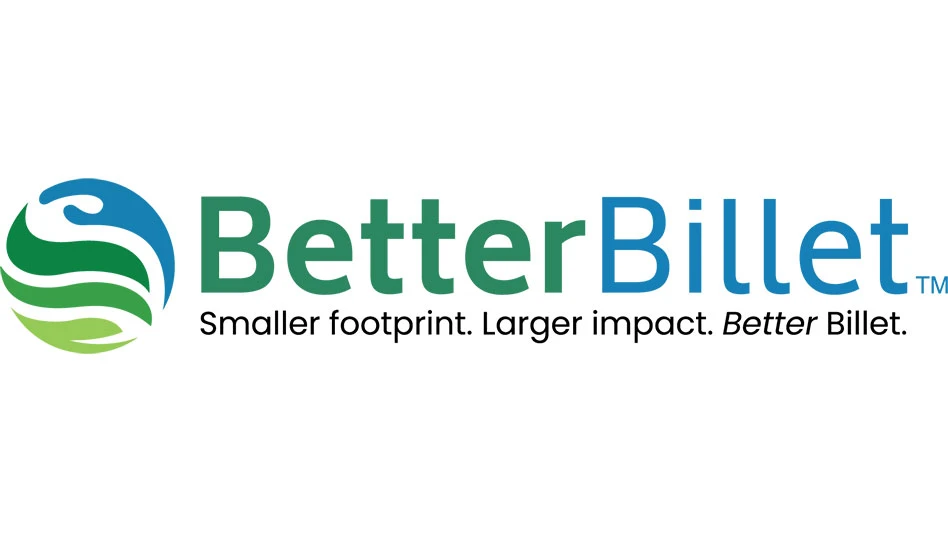Why are developers of recovered paper mills talking to institutional investors regarding the financing of their proposed facilities? In recent years, an increased number of mills have been financed in large part by tax-exempt revenue bonds. These mills have primarily been either linerboard mini-mills, using old corrugated, double lined kraft cuts and mixed paper; or deinked pulp mills, using office paper to produce market pulp.
The reason for this increase is that tax-exempt revenue bonds represent a low-cost financing option for developers due to their lower interest rates. Recovered paper mills can qualify for tax exempt financing because they deal with a "post-consumer material."
Most independent projects that have been financed to date have used non-recourse project financing. This means bondholders will be repaid from the operating revenues of the project, without a backup guarantee or pledge of payment by a parent organization. Moreover, most of these projects have been "non-rated;" that is, the developers and the underwriters of the projects have not requested rating agencies review the facilities and provide them with a rating on their bonds. Because they are not rated, they do not qualify for investment grade portfolios and are often referred to as "junk" bonds, even though individual projects may be based on sound contracts and show favorable debt service coverage.
A recycled paper mill project is a "commodity" transaction, where typically there is neither a guaranteed price for the incoming furnish supply nor a long-term contract for the sale of the offtake.
Institutional investors have shown a tendency to be uncomfortable with commodity projects due to the risk associated with significant variations in the cost of furnish and the offtake price. They also are concerned about the ability of the proposed technology to produce projected quantities at proposed quality, at proposed production cost, and without unforeseen limitations of dependent services.
For a project to be financed and developed successfully, institutional investors (and their independent engineers) must generally be comfortable with the following factors: furnish specifications; cost and availability of the recovered fiber; a site and process that are environmentally appropriate; demonstrated ability of the proposed technology to produce projected quantities of product at acceptable quality levels; price and markets of the financing structure that allows for mitigation of the investor’s risk while still offering the developer a reasonable rate of return; and acceptable testing procedures properly measuring performance and allocate responsibility.
FURNISH SPECIFICATIONS
Furnish specifications establish limits of contamination and qualities of fibers a facility will handle through its expected life. From the investor’s standpoint, the furnish specifications must be realistic, measurable, and economically justifiable.
Current recovered paper composition can be expected to change over time. The change will come about as the recovery of paper increases, forcing suppliers to source "deeper" in the waste stream. It is also a function of changes in printing technology, increased recycling of paper resulting in more groundwood, shorter fiber, and increased use of colored paper.
There are a number of methods used to define the composition and quality of recovered paper furnish to be delivered to the facility, including input limits on various paper categories; content limits on fiber or contaminant type; and restrictions on "skimming", or presorting, which removes high grades such as white ledger or computer printout for other markets.
RECOVERED PAPER FURNISH
Investors like as much certainty in a transaction as possible, and prefer projects that have contracts with a guaranteed price for both the input and output during the term of the bonds. Unfortunately, mills that have been developed on the basis of non-recourse project financing have had to rely on fairly uncontrollable market pricing.
Developers who expect financing typically must accomplish the following:
•Conduct a sourcing study for the required furnish materials. The study should identify supply sources, collection channels, and competing end users.
•Negotiate a supply agreement. These typically address grade definitions and quality standards; a basis for pricing; quantity guarantees; degree of exclusivity; and arrangements for resolving disputes.
•Develop an internal sourcing strategy. Project developers are well advised to source some furnish on their own from other suppliers to develop a familiarity with furnish markets and to keep other potential supply channels open.
•Develop a contingency plan. Investors likely expect a sensitivity case analysis of high furnish prices, and to understand how the developer would deal with it.
One way to deal with tightening furnish supply is to include technology capable of handling lower grades of paper. This allows newer deinking plants greater flexibility in operations and provides better potential to control costs.
ENVIRONMENTAL RISKS
During the last 15 to 20 years, investors have become aware of environmental risks associated with project financing, including permit loss, environmental law changes, and unknown environmental problems related to the site, all of which can adversely impact a project’s viability.
Recovery of paper at a mill creates waste products which must be properly handled from an environmental perspective. In addition, the pulp and paper industry is being pressured to ultimately reach close to zero discharge.
VIABLE TECHNOLOGY
Investors are interested in the viability of the technology. Concerns about potential technological risk must be addressed by the independent engineer.
Requirements for cleaner and brighter product have evolved at the same time as mills are under pressure to process a less costly and consequently lower quality furnish. In addition, environmental demands are growing for chlorine-free bleaching, lower water use, and reduced solid waste generation resulting in greater technological challenges. Some new technologies have had little time to prove themselves.
Technology risk to the investor can come in the form of the developer employing unproven equipment, or unproven process flows. New equipment is often tested at an existing mill before it is selected for a new facility.
Due to rapidly progressing designs, pilot plant trials are important. Larger vendors generally have their own pilot facilities to test new process flow sheets that will be scaled to commercial processes. These facilities are most useful when operated as close to the commercial design level as possible.
The risk to the investor of new process flow sheets lies in the unknown effects associated with scale-up of the process from the pilot plant. These effects are mitigated by knowledge of the performance of each piece of equipment in commercial facilities, data from the pilot trials, and computer modeling of the full process.
While risk cannot be completely avoided, proper evaluation by the developer is critical to minimize it.
MARKETS AND PRICES
The end product price is subject to the global market. This can concern investors who prefer guaranteed markets.
Linerboard price histories are well-established, while deinked pulp has less of a history. To provide investors with some type of basis for developing estimates of future prices of deinked pulp, engineers have looked for surrogates with price histories, such as northern bleached hardwood kraft. The projection of future prices can either follow a calculated trend line, the average of the cyclic history of this material, or can be based on a prediction of future cycles themselves. Since investors seldom take an optimistic view of the future, recycled pulp is often considered a substitute for NBHK. Investors often project pulp prices to be cyclical, with highs and lows over a six-to eight-year cycle.
The financial impact caused by the cyclical nature of pulp prices could be somewhat offset if the price of the recovered paper would follow the same cyclical pattern. Unfortunately, there is no assurance that the cost of recovered paper will follow the price of pulp.
OFFTAKE SPECIFICATIONS
The specification for linerboard or pulp offtake are either dictated by the market or by specific contracts. Offtake specs are moving toward virgin pulp quality, making investors increasingly aware of the need for the facilities to include technology capable of attaining these lofty goals.
Today’s standards for deinked pulp guarantees generally allow for two or more grades of pulp to be produced. The lower grade allows for some margin for pulp exceeding stringent limits.
FINANCING STRUCTURE
Due to the risk and market fluctuation of recovered paper, furnish, and finished product, consulting firms have worked with investors and developers to create new financing devices which would allow a non-recourse project to weather anticipated ups and downs of the market. These devices require creativity by the developer, independent engineer, and finance team. These devices include the infusion of more equity by the developer, and the development of a series of reserve funds.
Non-recourse financings are typically structured to include a debt service reserve fund. Such a fund generally equals at least 10 percent of the principal amount of the bond issue, and is usually funded from bond proceeds. Investors are typically not comfortable if the projected operating results indicate it will be necessary to use debt service reserve funds during certain years to cover shortages of funds available for debt service payments. Projections are tested by independent engineers in a series of sensitivity analyses to determine the potential impact on debt coverage ratio.
Test cases may include increases in operating and maintenance expenses, drops in pulp prices, and declines in plant throughput. The purpose of the sensitivity analyses is to identify whether debt service coverage is projected to remain viable.
Debt service reserve funds are only expected to be drawn down if an unforeseen financial emergency causes the project to be unable to meet its repayment obligations. If sensitivity analyses indicate the debt service reserve fund must be used to meet debt payments, the project is typically restructured until the operating results indicate the debt service reserve fund will not be invaded.
STABILIZATION FUND
A new reserve fund is known as the project stabilization fund. This fund is meant to cushion the financial impact associated with cyclical variations of costs of raw material and market prices of product.
The process of making decisions regarding fund size, sources of initial funding, and how to replenish the fund, can result in a conflict between the interests of the developer and the investor. Money for the stabilization fund generally comes from a combination of bond proceeds, equity, and operating revenues. Using additional bond proceeds for the stabilization fund increases bond size and resulting debt service, decreasing profits. Equity contributions and use of operating revenues either increases an owner’s investment or decreases their annual profits. However, creation of the project stabilization fund has at times been the vehicle needed to attract enough investors and allow a project to be financed.
Generally, the larger the stabilization fund, the larger the number of investors. Determining the proper size of the stabilization fund becomes an iterative process. The independent engineer prepares a series of projected operating results for various cyclical variations of pulp price and furnish cost. The magnitude and duration of the price cycles is based on variations seen in the past. The fund size is driven to a large extent by the underlying assumptions regarding the variations in the prices of pulp and feedstock. The final fund size may end up in the range of one to two times the size of the debt service reserve fund.
Making decisions regarding sources for the stabilization fund can be a challenge. Initial funding is ultimately accomplished between a combination of bond funds and equity. The initial balance immediately following financial closing is typically less than the required maximum balance. How the fund will be built up from the initial balance to the required balance and how funds will be replaced are important subjects between the developer and investors. Typically, if the stabilization fund balance is below the required level, all available dollars will be deposited in profitable years until that level has been met. Once a fund has reached a pre-determined balance, it is possible only a portion of the funds available must be deposited in the fund.
ACCEPTANCE TEST
The inclusion in the financing documents of the proper performance guarantees is a critical element to the proper management of risk in the financing of a paper deinking facility. Essentially, the guarantees must be formulated in such a way that if the facility is capable of meeting the performance guarantees on a consistent basis, it is reasonable to expect it will be able to meet its financial obligations. The instrument by which guarantees are proven by the contractor is the acceptance test. The test establishes the length of time the facility must demonstrate the level of guarantees and protocol used to verify the guarantees are met.
Passing the acceptance test often releases the contractor from further obligations to the owner, so a properly crafted acceptance test is of importance to prospective investors. Passing the test also frees final payment of any retainage by the owner to the contractor. If the facility doesn't pass the test within the pre-agreed start-up period, liquidated damages may be assessed, the proceeds to be used to pay for shortfalls in costs and debt.
Efficacy insurance may allow a contractor to transfer some of the performance guarantee risk. A positive review by an engineer is often a prerequisite to obtaining efficacy insurance.
Linerboard mini-mills and deinked pulp mills are frequently financed with non-recourse investment. To be successful in obtaining this investment, investors – and their independent engineers – must be comfortable with the following items: furnish specifications; cost and availability of the recovered paper; a site and process that are environmentally appropriate; process technology; price and market for the offtake; and appropriate financing structure.
While there are inherent obstacles in these projects, such as market risk of furnish and offtake, there are ways to overcome those obstacles – such as a stabilization fund. Successful project developers will consider all means possible to overcome the inevitable obstacles. – Dave Berg, Jeff Clunie, Ben Levie, Mike Macaulay, Greg Sutherland.
The authors are consultants with R.W. Beck & Associates.
This article is excerpted from a presentation given during the 1995 Wastepaper VI conference in Chicago.
Get curated news on YOUR industry.
Enter your email to receive our newsletters.

Explore the August 2001 Issue
Check out more from this issue and find your next story to read.
Latest from Recycling Today
- GFL opens new MRF in Edmonton, Alberta
- MTM Critical Metals secures supply agreement with Dynamic Lifecycle Innovations
- McClung-Logan Equipment Company joins Tana’s authorized dealer network
- Grede to close Alabama foundry
- Plastics Recycling Conference 2025: Working toward their targets
- SWACO rolls out new commercial recycling and food waste programming
- Updated: Matalco to close Canton, Ohio, plant
- Metso launches electric Anode Weighing and Casting Machine





